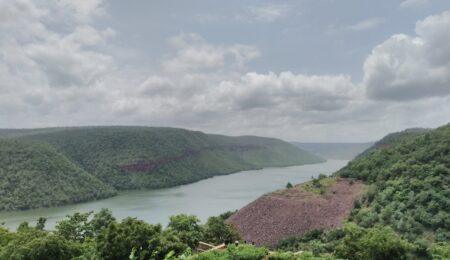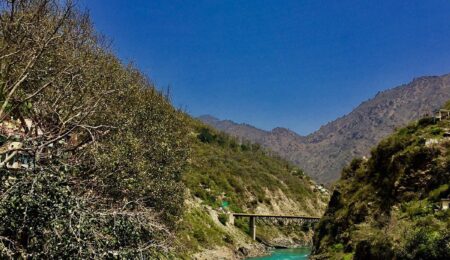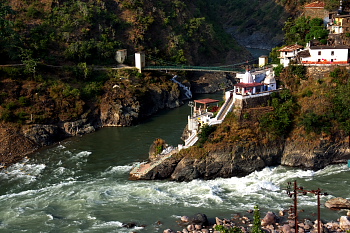 The Godavari River, known as the Dakshina Ganga or the Ganges of the South, is one of the longest rivers in India and holds immense religious significance in Hindu mythology. Flowing through the states of Maharashtra, Telangana, Andhra Pradesh, and Odisha, the Godavari River has nourished the land and shaped the region’s cultural tapestry for millennia. From its source in the Western Ghats to its confluence with the Bay of Bengal, the Godavari River has been revered as a sacred lifeline and a symbol of purity and divinity.
The Godavari River, known as the Dakshina Ganga or the Ganges of the South, is one of the longest rivers in India and holds immense religious significance in Hindu mythology. Flowing through the states of Maharashtra, Telangana, Andhra Pradesh, and Odisha, the Godavari River has nourished the land and shaped the region’s cultural tapestry for millennia. From its source in the Western Ghats to its confluence with the Bay of Bengal, the Godavari River has been revered as a sacred lifeline and a symbol of purity and divinity.
The Godavari River originates from the Brahmagiri Hills near Nashik in Maharashtra. It meanders through the Deccan Plateau, carving through vast plains, lush forests, and picturesque landscapes. Covering a distance of approximately 1,465 kilometers, the Godavari is the second-longest river in India after the Ganga. Its extensive network of tributaries, including the Pranhita, Indravati, Manjira, and Sabari rivers, adds to its grandeur and significance.
The Godavari River is one of the most sacred rivers in India. It is also one of the country’s longest rivers, often called the ‘Vruddha Ganga’ or the ‘Dakshin Ganga’. The river starts from the Trimbakeshwar Temple in Nashik, Maharashtra, and flows through the states of Maharashtra, Telangana, and Andhra Pradesh, and finally empties into the Bay of Bengal. The Godavari is considered one of the most holy rivers in Hinduism and is worshipped by millions of devotees across the country.
The Godavari is believed to have been first mentioned in the Rig Veda, one of the oldest sacred texts of Hinduism. It is also said to have been mentioned in the Ramayana and the Mahabharata, two of the most famous Hindu epics. The river is considered extremely holy and is often compared to the Ganges. The Godavari is sometimes referred to as the ‘Southern Ganges’.
There are many temples and shrines located along the banks of the Godavari. These include the Ramkund in Nashik, the Janardana Swami Temple in Nasik, the Tryambakeshwar Temple, the Godavari Temple in Rajahmundry, the Kotipalli Markandeya Temple, and the Papavinasam Temple. Millions of devotees visit these temples yearly to offer their prayers and dip in the holy river. The Godavari is also considered one of the most important rivers in Hindu mythology. According to legend, the gods created the river to provide water for the people of the earth. It is also said that the river was created by Lord Brahma, the creator of the universe. The Godavari is also an important pilgrimage site for Hindus. Every twelve years, the Kumbh Mela, one of the largest religious festivals in the world, is held at one of the four sites along the river.
In Hindu mythology, the Godavari River is considered to be a celestial entity and is associated with the legend of the descent of the river goddess Godavari Devi. It is believed that Lord Rama, the seventh avatar of Lord Vishnu, spent a significant part of his exile along the banks of the Godavari. The river is mentioned in ancient texts like the Ramayana, Mahabharata, and Puranas, which further amplify its sacred status.
Pilgrimage along the Godavari River is deeply ingrained in the region’s cultural fabric. The river is dotted with numerous pilgrimage sites, ghats (steps leading to the riverbanks), and temples attracting devotees from all the country’s corners. Nashik, Trimbakeshwar, Rajahmundry, and Bhadrachalam are among the most prominent pilgrimage destinations along the Godavari, where devotees undertake spiritual journeys, offer prayers, and seek blessings.
The Kumbh Mela, one of the largest religious gatherings in the world, is held on the banks of the Godavari River in Nashik every 12 years. During this auspicious event, millions of devotees gather to take a holy dip in the river, seeking spiritual purification and redemption. The riverbanks come alive with elaborate processions, religious discourses, and vibrant cultural performances, reflecting the deep connection between the people and the Godavari River.
 The Godavari River is also known for associating with the great Hindu sage, Gautama Maharishi. Panchavati, located near Nashik, is believed to be the place where Lord Rama and his wife Sita resided during their exile. The Parnashala, a cluster of five banyan trees, and the Ram Kund, a sacred tank, are revered sites where devotees pay homage and offer prayers. These places carry the essence of ancient mythology and serve as a spiritual retreat for seekers.
The Godavari River is also known for associating with the great Hindu sage, Gautama Maharishi. Panchavati, located near Nashik, is believed to be the place where Lord Rama and his wife Sita resided during their exile. The Parnashala, a cluster of five banyan trees, and the Ram Kund, a sacred tank, are revered sites where devotees pay homage and offer prayers. These places carry the essence of ancient mythology and serve as a spiritual retreat for seekers.
Apart from its religious significance, the Godavari River is crucial in sustaining the region’s economy and ecology. The river’s water is extensively used for irrigation, supporting agricultural activities, and contributing to the prosperity of the farmers in the region. The fertile alluvial plains along the Godavari basin are known for their agricultural productivity, cultivating crops like rice, cotton, sugarcane, and mangoes.
The river starts in the Western Ghats of Maharashtra, flows through Telangana and Andhra Pradesh, and finally empties into the Bay of Bengal. The river has a length of 1465 km and a basin area of 312,812 km2. The Godavari is considered one of the most sacred rivers in Hinduism and is also known as the “Dakshin Ganga” or the “Southern Ganga”.
The Godavari River has a rich and diverse ecosystem with many flora and fauna species. The river is home to many endangered and threatened species of animals, including the Indian gharial, the mugger crocodile, the river dolphin, and the Indian rhinoceros. The Godavari river basin is also home to many rare and endemic species of plants. Some of the important plants in the basin include the water lily, lotus, chestnut, hyacinth, and fern.
However, the Godavari River faces environmental challenges, including pollution and excessive sand mining, which affect its ecological balance. Initiatives such as the Godavari Action Plan and the Godavari River Basin Management Plan have been implemented to address these issues, aiming to preserve and restore the river’s health and vitality.
Visiting the Godavari River is an enchanting experience that offers a blend of spirituality, natural beauty, and cultural heritage. The serene surroundings, the river’s gentle flow, and the vibrant festivities create an atmosphere of tranquillity and devotion. Taking a holy dip in the sacred waters, witnessing the aartis (devotional rituals), and participating in the festivals along the riverbanks allow individuals to connect with their inner selves and experience the divine energy that permeates the atmosphere.
In conclusion, the Godavari River is more than just a physical entity; it is a testament to India’s deep-rooted spirituality and cultural heritage. It symbolizes the divine flow of life, nurturing the land and its people. As we continue to cherish and protect the Godavari River, let us honor its sanctity, preserve its purity, and ensure that future generations can experience the timeless divinity and cultural richness embodied by this sacred waterway.




